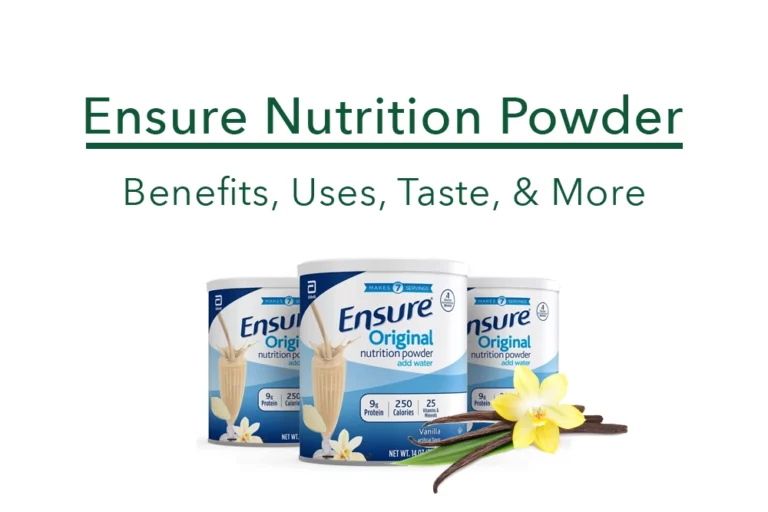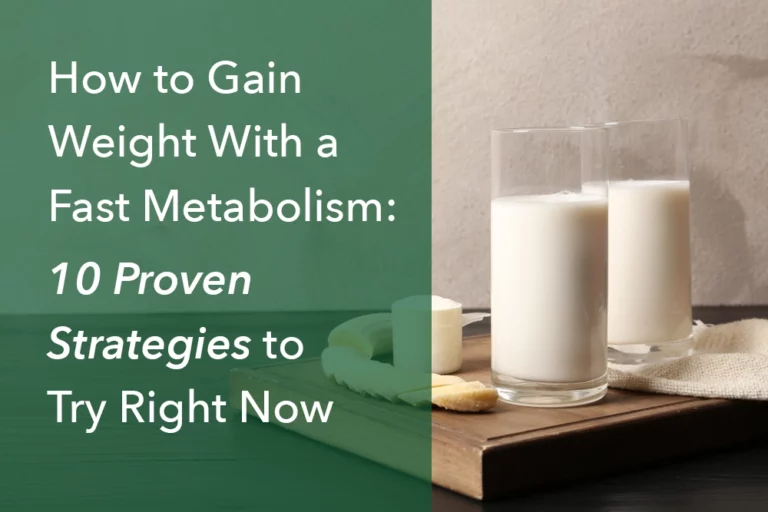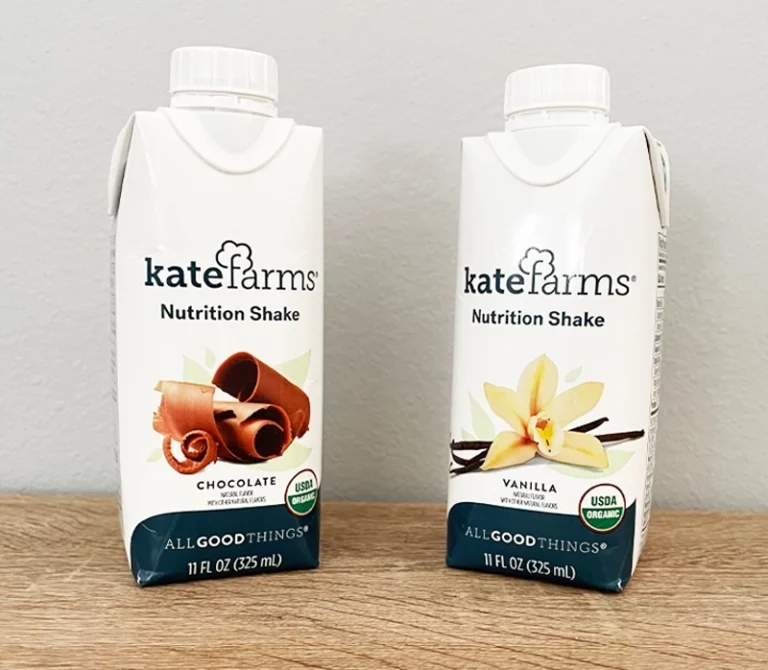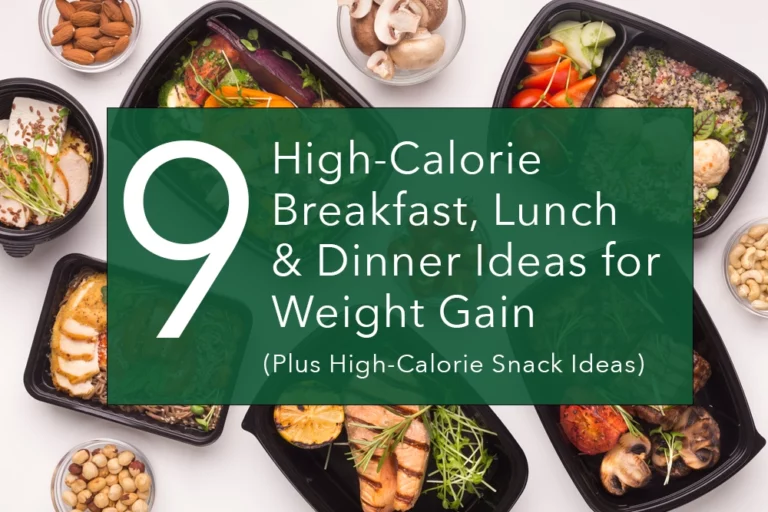Easy 7-Day Weight Gain Meal Plan for Fast Results
We include links to products that we think our readers will find useful. If you buy through links on this page, we may earn a small commission. Learn about our process.
You may desire to gain weight if you’re underweight, an athlete looking to gain muscle, or you’ve recently experienced unintended weight loss.
At the same time, however, you may struggle with high-calorie meal and snack ideas that are budget-friendly and easy to make to help you gain weight.
This easy 7-day weight gain meal plan with two vegan-friendly days can work for everyone, including teens, adults, and the elderly.

How many calories do you need to gain weight?
To gain weight, you need to consistently eat more calories than what your body uses each day.
The number of calories you need each day to maintain your body weight is known as your maintenance calories, or total daily energy (calories) expenditure (TDEE).
TDEE is composed of three factors (1):
- Resting energy expenditure (REE): Also known as resting metabolic rate, REE is the number of calories you burn at rest. REE is the largest component of TDEE, comprising 60–70%.
- Thermic effect of food (TEF): TEF refers to the energy needed to digest and process the food you consume. Protein requires the most energy to digest and process, followed by carbohydrates and fats.
- Activity energy expenditure (AEE): This refers to the energy you expend during both sports-like exercise and nonexercise activities like mowing the yard or walking the dog.
Your age, muscle mass, fat mass, body size, and gender, among other factors, influence the components of TDEE and therefore the number of calories you need to maintain your weight or gain weight.
You don’t necessarily need to know your maintenance calories to determine the number of calories you need to gain weight, but it helps.
You can estimate the number of calories you need to maintain your body weight using an online calculator like this one.
Alternatively, you can track your calories — either by hand or with the help of a calorie tracking app — and monitor your weight for 7–10 days.
After the 7–10 days, total the number of calories you ate and divide by the number of days you tracked to find your average daily calorie intake.
You can use this number as an estimate for your maintenance calories if your weight stayed relatively stable over the period you tracked.
Once you have an idea of what your maintenance calories are, add 200 to 500 to that number to get the number of calories you should eat to gain weight (2, 3).
If you want to gain weight fast, aim toward the upper end of this range.
This calorie surplus should lead to a healthy rate of weight gain of 0.25–0.5% of your body weight per week.
So if you weigh 150 pounds (68 kg), you should gain about 0.4–0.8 pounds (0.2–0.4 kg) per week.
You can choose to eat more than 500 calories above your maintenance calories, but you will likely experience rapid fat gain as a result.
Recalculate your calorie goal at least monthly to ensure consistent progress since the number of calories you need to gain weight will increase over time as your weight increases.
Summary
Consume 200–500 calories above your maintenance, or TDEE, calories to gain weight. This range will lead to a healthy weight gain of 0.25–0.5% of your weight each week.
High-calorie foods to center your meals and snacks around
Increasing your calories to gain weight isn’t always easy.
Poor appetite, feeling full shortly after eating a meal, time constraints, or a fast metabolism, can make it difficult to get the calories you need to gain weight.
Therefore, it’s best to center your meals and snacks around high-calorie foods so that it’s easier to hit your calorie goals for weight gain.
Here are high-calorie foods to center your meals and snacks around:
- Fruits: avocado, bananas, coconut, dried fruit, grapes, mango, pears
- Starches: beans, bread, cereals, oatmeal, pasta, potatoes, rice
- Nuts and nut butter: almonds, almond butter, cashews, peanut butter, pecans, walnuts
- Full-fat dairy products: cottage cheese, Greek yogurt, and milk
- Poultry: chicken, turkey, whole eggs
- Meats: fattier cuts of meat, including ribeyes, t-bones, new york strips, pork belly
- Seafood: fatty fish, including tuna, salmon, herring, and mackerel
- Oils: canola, coconut, and olive oil
Sweets, desserts, sugary beverages, and fried foods can be very effective for gaining weight since they’re loaded with calories but you shouldn’t rely heavily on them since they are void of essential nutrients and promote inflammation in the body by disrupting your gut’s bacteria, especially when consumed as excess calories (4).
You should still include non-starchy vegetables in your diet like leafy greens, broccoli, mushrooms, tomatoes, and peppers for their micronutrients like vitamins, minerals, and antioxidants, but they should be less of a focus, especially if you get full easily.
Here is a list of high-calorie vegetables and high-calorie fruits to add to your diet.
Supplements like protein powders, meal replacements, and weight gainers are also useful for boosting your calorie intake.
You can blend them with fruit, milk, yogurt, peanut butter, and other high-calorie foods to make high-calorie shakes and smoothies.
Drinking some of your calories can be especially useful if you struggle with a poor appetite or early satiety since liquid calories tend to be less satiating or filling than solid calories (5).
Summary
Centering your meals and snacks around high-calorie foods will make it easier to get the calories you need to gain weight.
Easy 7-day weight gain meal plan
This 7-day weight gain meal plan with two vegan-friendly days provides around 3,000 calories each day.
The meals and snacks of the weight gain meal plan contain five ingredients or fewer to make them easy and quick, but it’s still good practice to meal prep when you can.
You can increase or decrease the portion sizes depending on the number of calories you need to gain weight.
Day 1 (3,131 calories)
Breakfast (821 calories)
- 1 1/2 cups (120 grams) quick oats
- 1 cup (240 mL) whole milk to cook oats
- three whole eggs scrambled with 1 cup spinach
Snack (294 calories)
- whole apple, sliced
- 2 tbsp (33 grams) peanut butter
Lunch (864 calories)
- grilled hamburger on whole-wheat bun with toppings of choice
- medium-sized sweet potato for homemade fries
- 2 tbsp (14 grams) olive oil drizzled on sweet potato fries
Snack (291 calories)
- medium-sized banana
- handful (1 oz) of walnuts
Dinner (861 calories)
Chicken broccoli alfredo
- 8 ounces (227 grams) chicken breast
- 1/2 box (16 ounces) fettuccine
- 1/2 jar (14.5 ounces) alfredo sauce
- 2 cups broccoli florets
- 2 tbsp (28 grams) olive oil
Makes two servings (eat one and save the other).
Day 2 (2,977 calories)
Breakfast (669 calories)
- two slices whole-grain toast
- 2 tbsp (33 grams) peanut butter spread on toast
- 2 tbsp (41 grams) honey drizzled on toast
- 1 cup whole-fat milk
Snack (500 calories)
- 1 cup (227 grams) whole-milk Greek yogurt
- 1/2 cup (55 grams) granola for topping
Lunch (861 calories)
- leftover chicken broccoli alfredo
Snack (240 calories)
- 1 avocado, salted
Dinner (707 calories)
Baked salmon with red potatoes and green beans
- 8 ounces salmon, baked
- 16–20 red potatoes, roasted
- 2 cups green beans, sauteed
- 4 tbsp olive oil for green beans and potatoes
Makes two servings (eat one and save the other).
Day 3 (2,945)
Breakfast (880 calories)
Proats (protein-oats)
- 1 1/2 cups (120 grams) quick oats
- 1 cup (240 mL) whole milk mixed with 1 serving of Muscle Milk Protein Powder (pour over oats and cook)
Snack (410 calories)
- MET-Rx Big 100 Bar or similar high-calorie bar
Lunch (707 calories)
- Baked salmon with red potatoes and green beans leftovers
Snack (140 calories)
- 1 cup (140 grams) mango chunks
Dinner (808 calories)
Burrito bowl
- 8 ounces (227 grams) new york strip steak
- 1 can black beans
- 2 cups cooked white rice
- 1 cup pico de gallo
- 1 avocado, chopped
Makes two servings (eat one and save the other).
Day 4 (3,036 calories)
Breakfast (630 calories)
Peanut butter chocolate banana shake
- 1 banana
- 1/2 cup (40 grams) quick oats
- 1 tbsp (17 grams) peanut butter
- 1 package chocolate Carnation Breakfast Essentials
- 1 cup (240 mL) whole milk
Blend the quick oats into a fine powder, then add the remaining ingredients and blend until smooth.
Snack (280 calories)
- 1/2 cup (60 grams) Power Up Trail Mix (or similar)
Lunch (808 calories)
- Burrito bowl leftovers
Snack (400 calories)
- 2 slices whole-grain toast
- 1 cup full-fat cottage cheese spread on toast
- cucumber and tomato slices for toppings (optional)
Dinner (918 calories):
Ground beef tacos
- 4 flour tortillas
- 1/2 pound (8 ounces) ground beef cooked with taco seasoning
- 1 avocado, diced
- 1 large tomato, diced
- 1 cup Colby jack, shredded
Shredded lettuce and taco sauce are optional.
Makes two servings (eat one and save the other).
Day 5 (3,022 calories)
Breakfast (687 calories)
Almond butter and vanilla honey Greek Yogurt parfait
- 3/4 cup (184 grams) Greek Gods Honey yogurt
- 1/2 cup (63 grams) Honey Bunches of Oats French Vanilla Almond Granola
- 2 tbsp (33 grams) almond butter
- 1/2 cup (70 grams) strawberries, sliced
- 1/2 cup (70 grams) blueberries
Snack (435 calories)
Peanut butter banana wrap
- 1 flour tortilla shell
- 2 tbsp (33) grams peanut butter
- 1 banana, sliced
Lunch (918 calories)
- Ground beef taco leftovers
Snack (101 calories)
- pear slices sprinkled with cinnamon
Dinner (881 calories)
Grilled chicken mashed potato bowl
- 4 ounces (113 grams) grilled chicken breast, chopped
- two russet potatoes, mashed
- 2 tbsp (56 grams) butter for mashed potatoes
- 1/2 can corn, cooked
- 1/2 cup Colby jack cheese, shredded
Makes two servings (eat one and save the other).
Day 6 vegan (2,998 calories)
Breakfast (536 calories)
Black bean breakfast bowl
- 1 cup black beans, canned
- 1/2 cup tofu, scrambled
- 2/3 cup cherry tomatoes
- 1 ounce vegan tofu feta cheese
- 1/2 avocado
Snack (645 calories)
Almond buttercream shake
- 1/2 avocado
- 1 banana
- 1/2 cup (40 grams) quick oats
- 2 tbsp (32 grams) almond butter
- 1 cup (240 mL) protein-fortified almond milk
Lunch (841 calories)
Chickpea salad
- 1 can chickpeas
- 3 tbsp olive oil
- 1 cucumber, diced
- 2 medium-sized tomatoes, diced
- 1 1/4 tbsp white wine vinegar
Other ingredients like red onion, parsley, and garlic are optional.
Snack (105 calories)
- 1 medium-sized banana
Dinner (871 calories)
Vegan burrito bowl (871 calories)
- 2 cans pinto beans
- 2 cups cilantro lime white rice
- 2 avocados, chopped
- 4 romaine lettuce hearts, shredded
- 2 cups pico de gallo
Makes two servings (eat one and save the other)
Day 7 vegan (3,097 calories)
Breakfast (805 calories)
- 1 1/2 cups (120 grams) quick oats
- 1 cup sweetened soy milk to cook oats
- 2 tbsp peanut butter mixed into oats
- 1 cup berries to top oatmeal
Snack (420 calories)
- two whole-grain slices of toast
- 1 avocado, mashed and spread onto toast
Lunch (871 calories)
- vegan burrito bowl leftovers
Snack (280 calories)
Dinner (721 calories)
Vegan stir-fry
- 2 cups white rice
- 1 cup green peas
- 1/2 cup white mushrooms
- 1/2 cup broccoli florets, chopped
- 6 tbsp Ocean’s Halo Stir-Fry Sauce (or similar)
Summary
This 7-day weight gain meal plan provides around 3,000 calories per day. Adjust the portion sizes if you need fewer or more calories to gain weight at a healthy rate.
The bottom line
To gain weight, consume 200–500 calories more than your maintenance calories.
Center your meals around high-calorie but nutritious foods like whole-fat dairy products, starches, fruits, nuts and nut butters, fatty fish, and oils.
Use this 7-day weight gain meal plan, which provides 3,000 calories per day, to guide your food choices and adjust the portions based on your daily calorie target for weight gain.






